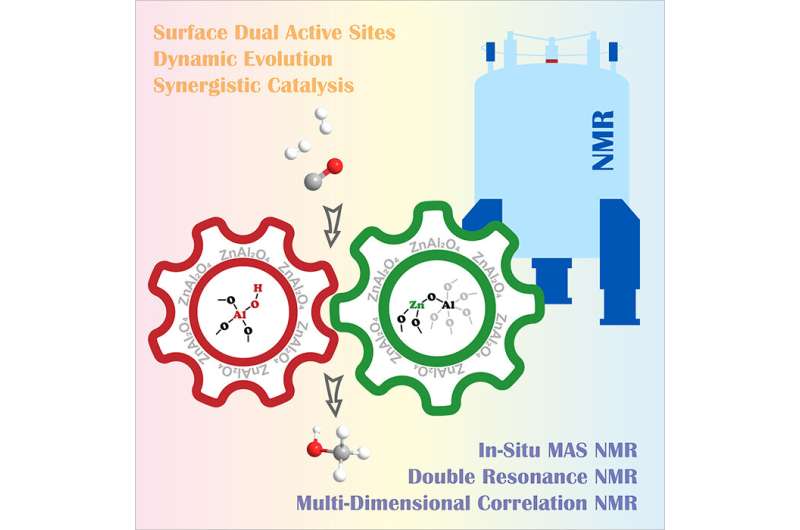This article has been reviewed according to Science X's editorial process and policies. Editors have highlighted the following attributes while ensuring the content's credibility:
fact-checked
peer-reviewed publication
trusted source
proofread
Synergistic interplay mechanism of dual active sites on bimetallic oxide for syngas conversion

Catalytic syngas conversion is the key route to bridge the gap between various carbon resources and essential chemicals. Oxide-zeolite (OXZEO) bifunctional catalysis is a new platform for this conversion.
Recently, a research team led by Prof. Hou Guangjin from the Dalian Institute of Chemical Physics (DICP) of the Chinese Academy of Sciences (CAS) has revealed the synergistic interplay mechanism of dual active sites on bimetallic oxide for efficient syngas conversion at the atomic level.
This study was published in Chem on Feb. 8.
The researchers investigated syngas conversion over a representative spinel ZnAl2O4 oxide with combined advanced solid-state nuclear magnetic resonance (NMR) technologies. They utilized an in-situ NMR method to observe the full process of syngas conversion to methanol over ZnAl2O4 catalyst, during which the formate and methoxy species were identified as the key intermediates.
Through a series of double resonance and multi-dimensional correlation NMR experiments, they identified the dual active sites with structure of -AlIV-OH···ZnIII-. Thus, they proposed the synergistic catalytic mechanism of the dual active sites on ZnAl2O4 catalyst for syngas conversion reaction.
Moreover, they elaborated on the dynamic evolution of the reaction intermediates and active sites during the reaction process at atomic level.
"On one hand, our work exemplifies the increasing capability of solid-state NMR spectroscopy in the study of surface/interface catalysis," Prof. Hou said. "On the other hand, the current understanding of the active sites and reaction mechanism can bring inspiration to study syngas conversion and CO2 hydrogenation on other bimetallic oxide systems, providing important guidance for the rational design and modulation of high-efficiency oxide catalysts."
More information: Qiao Han et al, Synergistic interplay of dual active sites on spinel ZnAl2O4 for syngas conversion, Chem (2023). DOI: 10.1016/j.chempr.2023.01.004
Journal information: Chem
Provided by Chinese Academy of Sciences





















